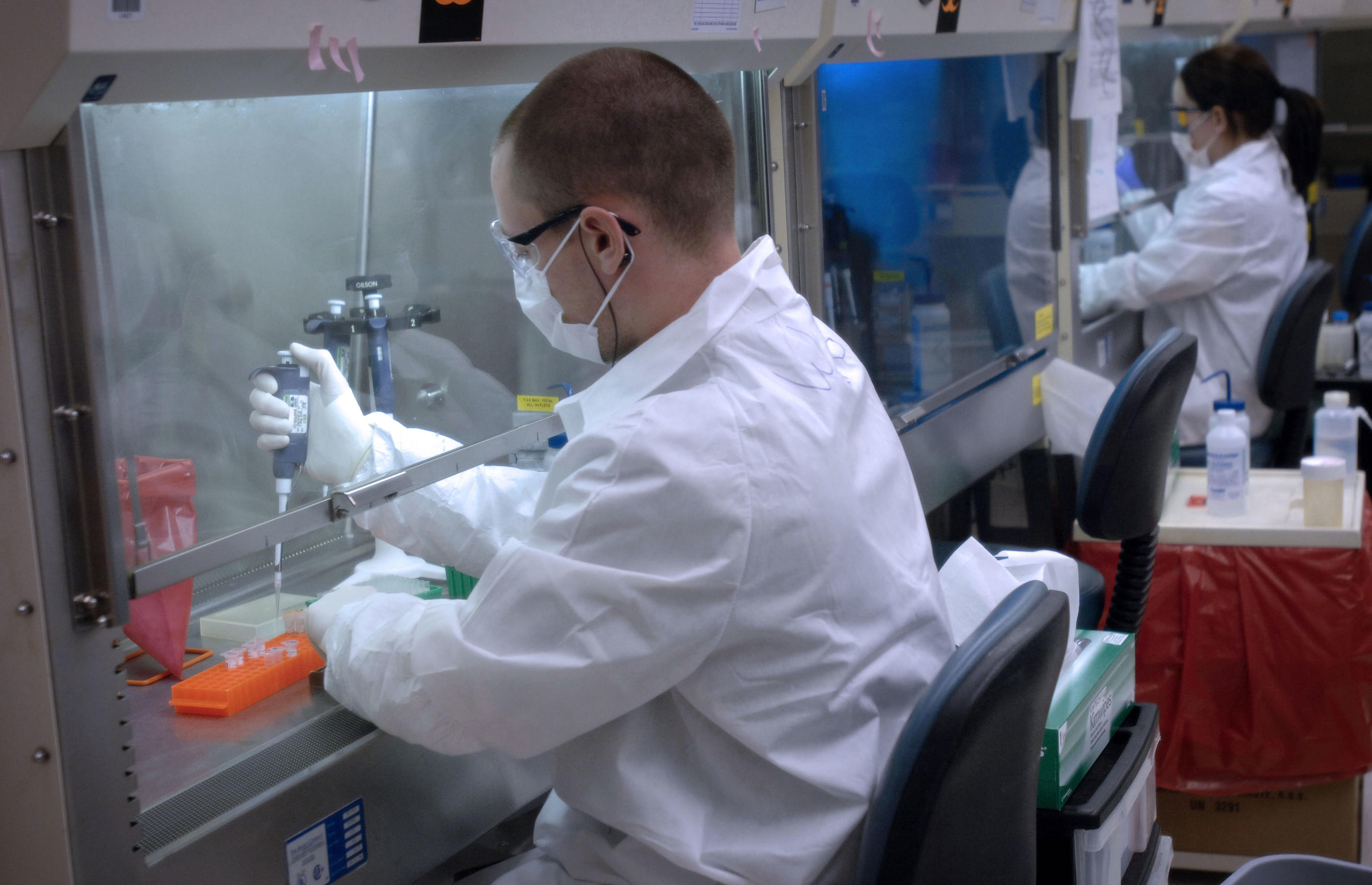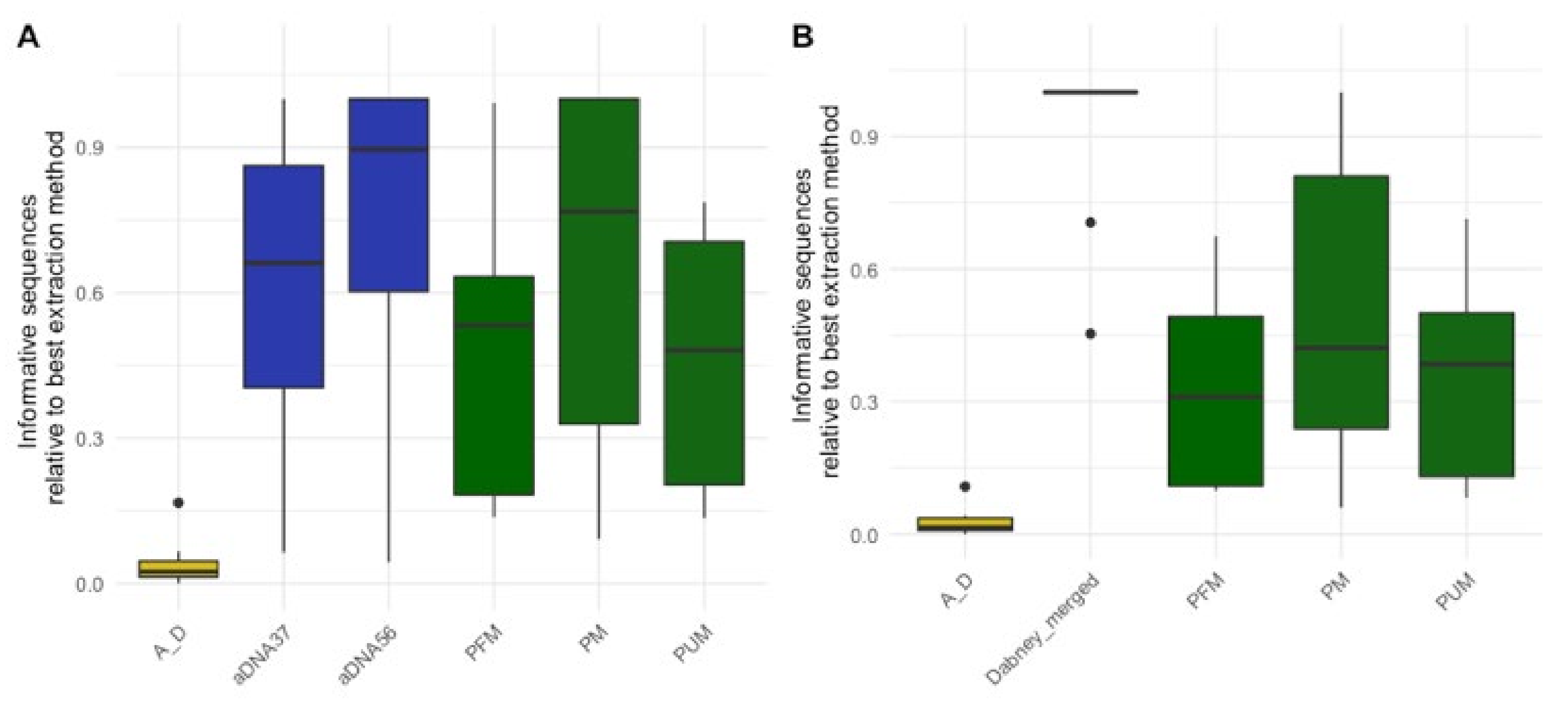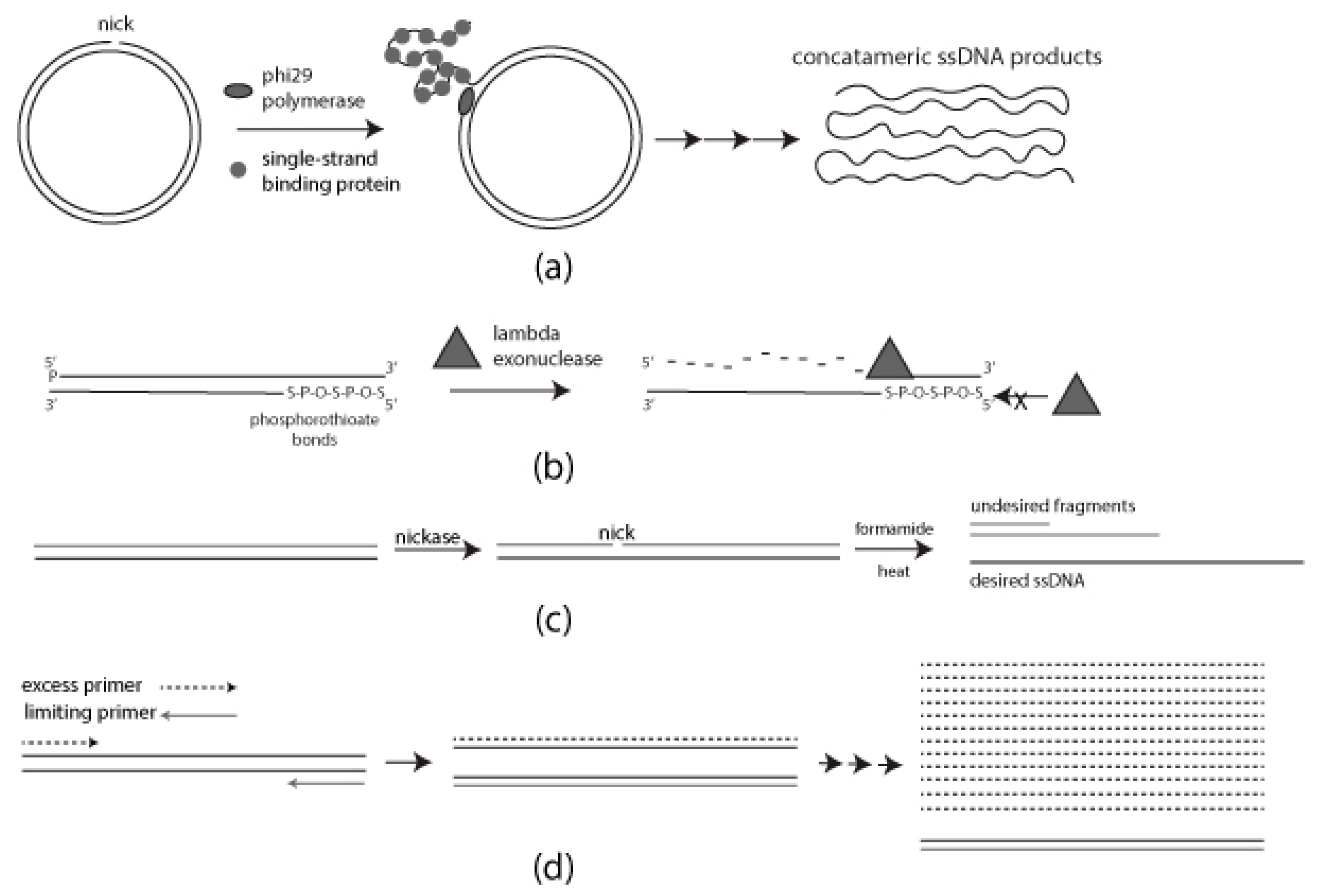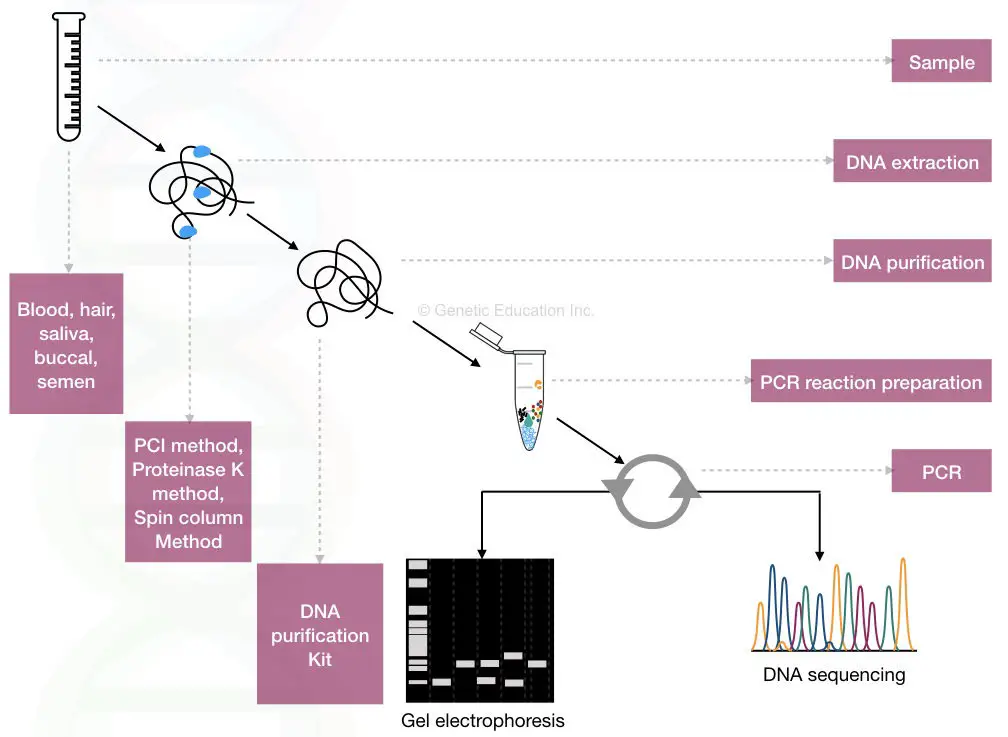Which Is a Method of Preparing Dna for Forensic Analysis
The forensic use of DNA typing is an outgrowth of its medical diagnostic useanalysis of disease-causing genes based on comparison of a patients DNA with that of family members to study inheritance patterns of genes or with reference standards to detect mutations. The Gordon Research Seminar on Forensic Analysis of Human DNA is a unique forum for graduate students post-docs and other scientists with comparable levels of education and experience to share cutting-edge newunpublished scientific research.

Advantages Of Filtration Method For Sperm Dna Genotyping In Sexual Assault Cases Sciencedirect
There are various methods of extraction as mentioned below though commonly used are Chelex-100 method silica-based DNA extraction and phenolchloroform method.

. The method that is required to prepare the DNA for the forensic analysis is to replicate in the amount that is easily detectable in any biomedical instrument for the analysis. 1 the isolation of the DNA from an evidence sample containing DNA of unknown origin and generally at a later time the isolation of DNA from a sample eg blood from a known. The main goal of the proposed program was to develop a method to repair DNA and determine its optimal method of use in forensic analysis.
Journal of Forensic Sciences Criminal Investigation How to cite this article. The use of the polymerase chain reaction PCR technique we can generate multiple identical copies from trace amounts of original DNA evidence. The PCR process has dramatically improved the capability of DNA analysis to obtain valuable evidence in a wide range of forensic applications.
Mitochondrial DNA mtDNA analysis is often utilized on these kinds of. Roughly speaking DNA Fingerprinting is a method of DNA analysis used by Forensic Scientists to help solve crimes. Organic extraction methods are often preferred for the extraction of biological stains containing small amounts of DNA or degraded DNA01-05 These methods could be considered less harsh than other methods such as the use of Chelex beads because no.
The general procedure includes. 21 DNA analysis in forensic science short tandem repeats Only small sections of an individuals DNA are analysed routinely for forensic evidence. The method that is required to prepare the DNA for the forensic analysis is to replicate in the amount that is easily detectable in any biomedical instrument for the analysis.
A small amount of DNA is put into the instrument and it replicates to for a. Several basic steps are performed during DNA testing regardless of the type of test being done. With deceased and decayed bodies personal identification is performed using hard tissue DNA commonly extracted from bone.
Modern DNA analysis is based on the statistical calculation of the rarity of the produced profile within a population. The quantity and quality of DNA used in the polymerase chain reaction PCR amplification step is critical for a successful outcome. The 2022 GRS will include discussion-based presentations that explore.
Overview of Steps in Analyzing DNA Evidence. This method uses an enzyme blend designed to fix environmentally-damaged samples that have DNA analysis issues. PCR Method Enables Better Analysis of Degraded Challenging DNA Samples.
Currently analysis of DNA through PCR-based genotyping and genomics sequencing approaches are the gold standard techniques in human forensic science 4. Mutations that affect the number of repeats are relatively common so within a population there are usually. Mitochondrial DNA and Methods for Forensic IdentificationJ Forensic Sci Criminal Invest.
The quality and quantity of DNA recovered from forensic samples are often limited and characterization would not be possible without the PCR method. The DNA produced with PCR can be analyzed using DNA fingerprinting techniques. DNA analysis methods have changed numerous times over the years as technology improves and allows for more information to be determined with less starting material.
To understand the challenges involved in such technology transfer it is instructive to compare. This enables forensic scientists to make billions of DNA copies from small amounts of DNA in just a few hours. The polymerase chain reaction can be defined as the process which is used to amplify the DNA in the huge amounts.
Techniques using organic reagents for DNA extraction are well accepted in the forensic science community. SDS-PAGE used to separate proteins which are transferred to membrane. How-ever proteomic analysis can overcome some of the challenges of using DNA-based techniques for specific types of forensic samples such as.
Ethidium bromidecesium chloride EtBr-CsCl gradient centrifugation method. Challenging forensic DNA samples extracted from for instance bones and hair can be degraded andor contain very little DNA. When possible DNA samples are collected stored and transported from the crime scene to the laboratory carefully and with the proper protocols in place.
According to the study published in WIRES Forensic Science liquid-liquid extractions and solid phase extractions are still the most popular sample preparation techniques. The parts analysed are called short tandem repeats STRs. Since enamel is the strongest tissue in the human body it was hypothesized that teeth may preserve.
NGS technologies have the promise of providing information in both of these dimensions thereby expanding the utility of mtDNA analysis in forensic science. Chromatography-based DNA extraction method. To repair damaged DNA prior to amplification and analysis.
Southern Blot Used in DNA analysis. Gazi Nurun N S Mohammad Z S. DNA is extracted separated with electrophoresis and transferred to the membrane.
Difficult and highly degraded DNA samples are the bane of every forensic DNA analyst. DNA amplification by PCR pro-vided an enormous increase in sensitivity allowing minute amounts of degraded DNA to be analysedand now forms the basis of all forensic DNA typingEarly PCR-based systems targeted a small number of SNPs in the HLA-DQA1 GENE 7Although these systems were use-. Western Blot Used to detect proteins.
The polymerase chain reaction can be defined as the process which is used to amplify the DNA in the huge amounts. Labelled probes are added which hybridise to specific sequences and identify them. However other techniques such as supported liquid extraction Phospholipid depletion and dilution are also employed on a regular basis in a typical crime laboratory.
A small amount of DNA is put into the instrument and it replicates to for a. This technique was first discovered by Professor Alec Jeffreys of the University of Leicester in 1984 when he found that DNA varies in each human being and makes us unique. DNA profiling is the determination of a DNA profile for legal and investigative purposes.

Nist To Assess The Reliability Of Forensic Methods For Analyzing Dna Mixtures Nist

Pin On Ridley College Classroom Videos

Genes Free Full Text Ancient Dna Methods Improve Forensic Dna Profiling Of Korean War And World War Ii Unknowns Html
Forensic Science Dna Testing Procedures

Differential Extraction An Overview Sciencedirect Topics

Genome Vs Gene An Unusual Comparison Genetic Education Genome Human Genome Gene Expression

Pdf A Simple And Efficient Method For Extracting Dna From Old And Burned Bone

Phenol Chloroform Extraction An Overview Sciencedirect Topics

Scientific Method Posters Scientific Method Posters Scientific Method Homeschool Science

Why Is Pcr Used In The Process Of Dna Sequencing Genetic Education Dna Sequence Dna Dna Molecule
Novel Method Of Labeling Dna Bases For Sequen Eurekalert
Forensic Science Dna Testing Procedures

Dna Profiling An Overview Sciencedirect Topics

Dna Free Full Text A Comparison Of Methods For The Production Of Kilobase Length Single Stranded Dna Html

Dna Fingerprinting Or Dna Profiling Rflp Based Pcr Based Dna Fingerprinting Steps Application Youtube

Dna Fingerprinting Definition Steps Methods And Applications




Comments
Post a Comment